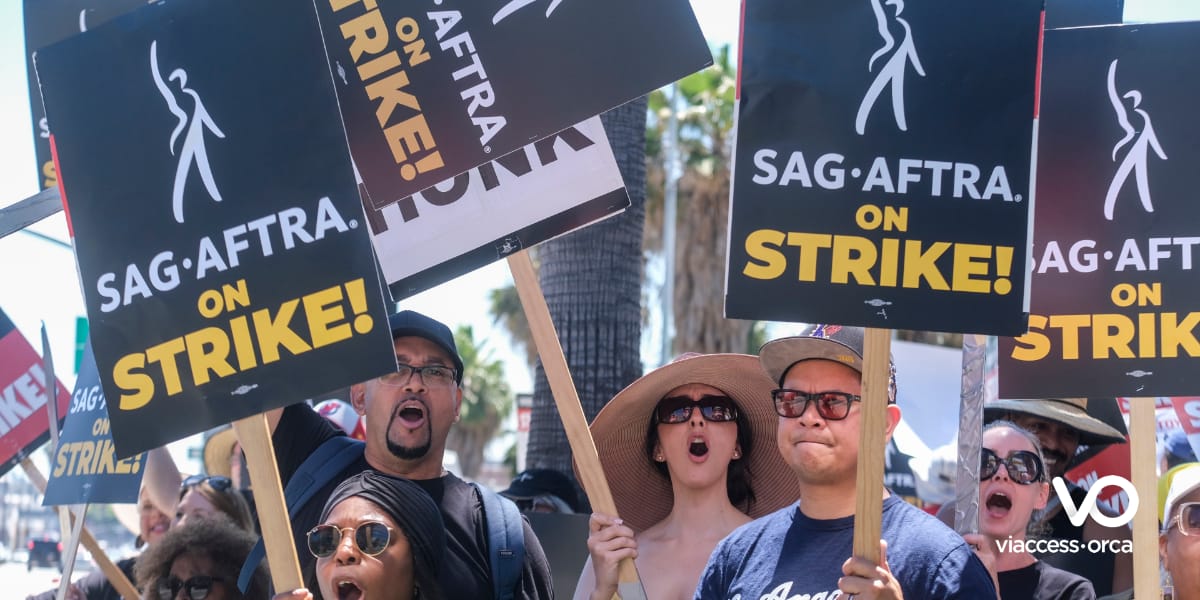The writers’ and actors’ strikes in the US promise to disrupt the flow of new content worldwide. But there are actions operators can take to mitigate the impact.

On July 14 2023, the 160,000 members of the US-based Screen Actors Guild-American Federation of Television and Radio Artists (SAG-AFTRA) went on strike. They joined the 11,500 members of the Writers Guild of America (WGA) who had already been on strike since May 2, making their combined action the biggest labor dispute to hit Hollywood and the US TV industry for 60 years.
Many upcoming shows and movies had already been suspended due to the WGA action, which has done everything from put late night topical TV shows, and reliable audience grabbers, such as Last Week Tonight With John Oliver on ice, to delaying upcoming tentpole attractions like Stranger Things 5 to a suspected 2025 at the earliest.
The SAG-AFTRA action has disrupted the content pipeline even more. Production has shut down on a huge range of projects such as Gladiator 2 and Deadpool 3, and if it goes on for more than four weeks will start to have an impact on the fall release schedules as the additional voiceovers and pickups that are a part of most movie productions simply won’t happen. Promo work has halted too. As the strike was announced the cast of Christopher Nolan’s Oppenheimer walked out of the London movie theatre that was hosting the film’s premiere in realtime, which was about as strong a signal that they could give that SAG-AFTRA means business.
And the betting is that the strike will go on for a lot longer than four weeks, with many speculating that it will drag on to the end of the year. The problem is that the issues are intractable and revolve around huge structural changes in the industry, with a lack of residual payments in the age of streaming and the threat of AI to jobs and livelihoods chief amongst them. And currently neither side is in the mood to back down.
Covid-19 halted production for around three months. This strike could halt it for potentially longer and the result may be an even more serious disruption to the production pipeline and the flow of new content than we saw during the pandemic. So, how is this likely to affect the industry and what can broadcasters and operators do to ride out the effects of the strike?
Strategies for action
Go global
For all the significant noise and bluster of the strike, it has to be remembered that it only affects a certain percentage of global video production. A very high-profile percentage, that is true, but there is plenty of other premium content being produced worldwide. Even Netflix only produces around 50% of its shows in the US. And with unions elsewhere either currently watching from the sidelines or legally barred from joining in the industrial action (Season 2 of HBO’s House of the Dragon is still shooting in the UK with its British cast, for instance, despite local actors’ union Equity’s sympathy for the US strike action) there is plenty of global content still being made.
Netflix Co-CEO, Ted Sarandos, was asked about the possible effects of the strike in Netflix’s recent earning call and was largely unconcerned. “We said in the last call we produce heavily across all kinds of content; TV, film, unscripted, scripted, local, domestic, English, non-English, all those things,” he said. And Netflix’s huge successes with Squid Game and Money Heist alone prove that winning content certainly doesn’t have to come from Hollywood.
Pivot to unscripted & more
The traditional reaction to Hollywood strikes is to increase the amount of unscripted content. In 1998, the WGA went on strike for 153 days and helped cement the reputation of shows such as Cops and America’s Most Wanted. Twenty years later, the 2007/2008 strike popularised a new wave of reality TV shows such as Big Brother, Paradise Hotel and more.
Certainly the US network’s revised fall schedules look to have more unscripted content than they would have done in a normal year. There is a potential banana skin here though in that reality shows have become more complex (and, incidentally, more expensive) over the years. There is even dispute over whether some of them can still genuinely be called ‘unscripted’ or not when they have such intricate plot lines. But for now that seems to be a battle for future strike actions…
Use data to maximise your existing content
Another tactic that is growing in popularity judging by the US fall schedules is pulling in content from ancillary streaming services. This allows the networks to ’premiere’ previously streaming-exclusive shows on their linear channels. Not everyone can do this, obviously, but it does point to the one area where a lot of broadcasters and operators can make a big difference, and that lies in maximising the use of the content they already have in their libraries.
Doing this effectively is very much tied in to data analysis and an understanding of what your viewers are watching and what they may want to watch next. Date relating to viewer habits can then be used to drive personalised recommendations, surfacing content from your library at the optimum time for viewer engagement.
As we wrote in our post on 5 tips to increase viewer engagement, personalization is not just about what to offer viewers, but also personalizing how it is offered. With new content potentially drying up, that can take a number of forms. Sone brief examples:
- Repeat experiences: Surfacing content that had a high engagement when it was previously watched, for example highlighting a show that was binge watched in the past
- The same but different: Highlighting shows that are similar to ones already watched and that are popular with other users
- If you liked X in Y: Showcasing popular actors / directors from a viewer’s viewing history and offering unwatched content
- A different angle: Refresh the marketing collateral of your library content providing new images, descriptions, again surfacing them based on viewer preference
There are many more strategies. The point is that with the right tools, data-driven TV business analytics can provide just the right sort of effective content discovery and personalization capabilities that can make a content library seem fresh and engaging despite any lack of new programming.
A slow motion effect
It is generally thought that the effects of the strike to date won’t really be felt in the schedules until the latter part of 2024. There are a lot of shows already filmed and in post production. But the fall schedules of the US networks suggest that some are already looking to eke out their content; to make sure that what they have can stretch a bit longer than they had planned.
This is effectively a hedge against the strike dragging on for months and not weeks and possibly a good move. There is a big difference between pausing production for a couple of weeks and stopping it entirely, only to have to spin up everything else several months down the line. If the strike continues there will be a definite gap in the schedules at some point down the line.
Broadcasters and operators around the world will therefore be watching the negotiations with a lot of interest. But, however things shake out in the negotiations, they have the tools at their disposal to ride out any slump in content production; both by making adjustments to their content strategies, and by using powerful data analytics to supercharge the effectiveness of their libraries and keep viewers engaged until the effects of the dispute have passed.

